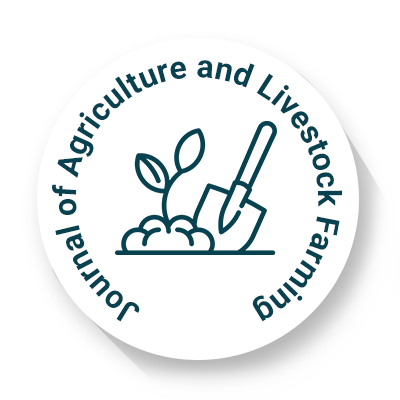
Journal of Agriculture and Livestock Farming
OPEN ACCESS

OPEN ACCESS
Crop breeding is a scientific method in agriculture, aiming to produce agricultural plants with desired characteristics, such as increased grain yields, improved nutrition quality, and resilience against biotic and abiotic stresses. Crop breeding is a sustainable way to boost production and yield stability without increasing the usage of fertilizers and pesticides. Recent developments in genetics and bioinformatics provide prospects for expediting crop improvement. Traditional breeding techniques, including selection and hybridization, have been employed to create enhanced crop varieties, while recent progress in molecular biology and biotechnology has expedited the procedure. Crop breeding can be performed using many different techniques, ranging from the selection of the most desirable plants for propagation, to methods that make use of knowledge of genetics and chromosomes, to more complex molecular techniques. Genes in a plant are what determine what type of qualitative or quantitative traits it will have. Crop breeders strive to create a specific outcome of plants and potentially new plant varieties, and narrow down the genetic diversity of that variety to a specific few biotypes. These developments are vital in tackling issues created by climate change, soil deterioration, and a continuously increasing global population. As agriculture advances, combining traditional breeding methods with advanced biotechnological breakthroughs will be crucial for creating crops that can flourish in various environmental settings while maintaining sustainable food production. In the history of crop breeding, the dramatic yield increase has been achieved for the major staple food crops such as rice, wheat, and maize, but the yield of most other crops has been relatively stable or has increased slowly.
Agricultural practices are vital in producing quality food and the ecosystem’s health. Therefore, along with introducing modern innovations into the sector, agricultural plant protection is an essential tool. The practice is continually evolving, providing precise mechanisms for preserving the health of plants. Crop protection combines strategies, tools, and products that protect against various pests. These include diseases, viruses, weeds, and insects. All of them can significantly lower or even kill plants. The best decision is to control the situation by reducing the risks rather than deal with the problem’s consequences. Culture protection allows farmers to monitor climate change and notice the appearance of dangerous weeds, pests, or diseases timely. Crop protection is essential for maintaining crop yields by averting losses due to pests, diseases, and environmental pressures. Crop protection helps to keep plants healthy and maintain sustainable yields. The choice of plant protection strategy depends on the type of cultures grown and the threat. It can be diseases, insects, or weeds. At the same time, measures must be timely and, wherever possible, preventive. Modern crop protection compounds make extensive use of digital solutions. They enable the precise analysis of soil and plant conditions and provide accurate information about external factors such as weather conditions. At the same time, they allow optimizing the use of resources. As a result, farmers can protect crops, increase profits, and minimize environmental damage. A mixture of chemical, biological, and cultural methods is used to safeguard crops from dangers that may greatly lower yields. Chemical control techniques, including pesticides, herbicides, and fungicides, have been extensively employed to fight pests and diseases; however, worries about environmental effects and pesticide resistance have prompted a transition to more sustainable methods. Biological control, utilizing natural predators, biopesticides, and helpful microorganisms, is becoming more recognized as an environmentally friendly option. Moreover, agricultural methods such as crop rotation, intercropping, and employing resistant crop varieties assist in minimizing pest and disease occurrences. Integrated Pest Management (IPM) merges various techniques, reducing dependence on chemicals while ensuring effective crop safety. With global agricultural systems experiencing growing challenges from climate changes and new pests, embracing comprehensive and sustainable crop protection methods will be essential for maintaining long-term agricultural productivity and food security.